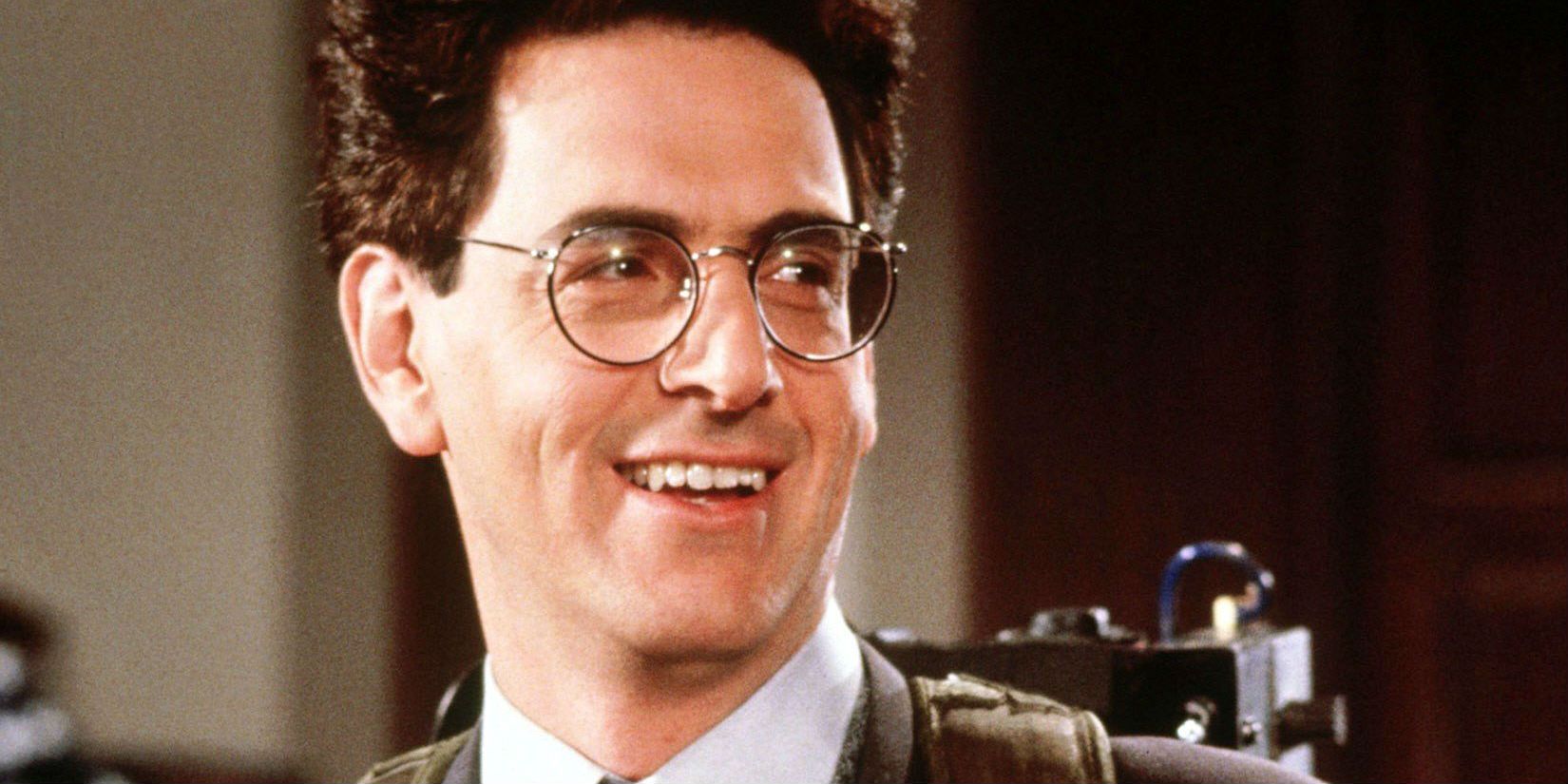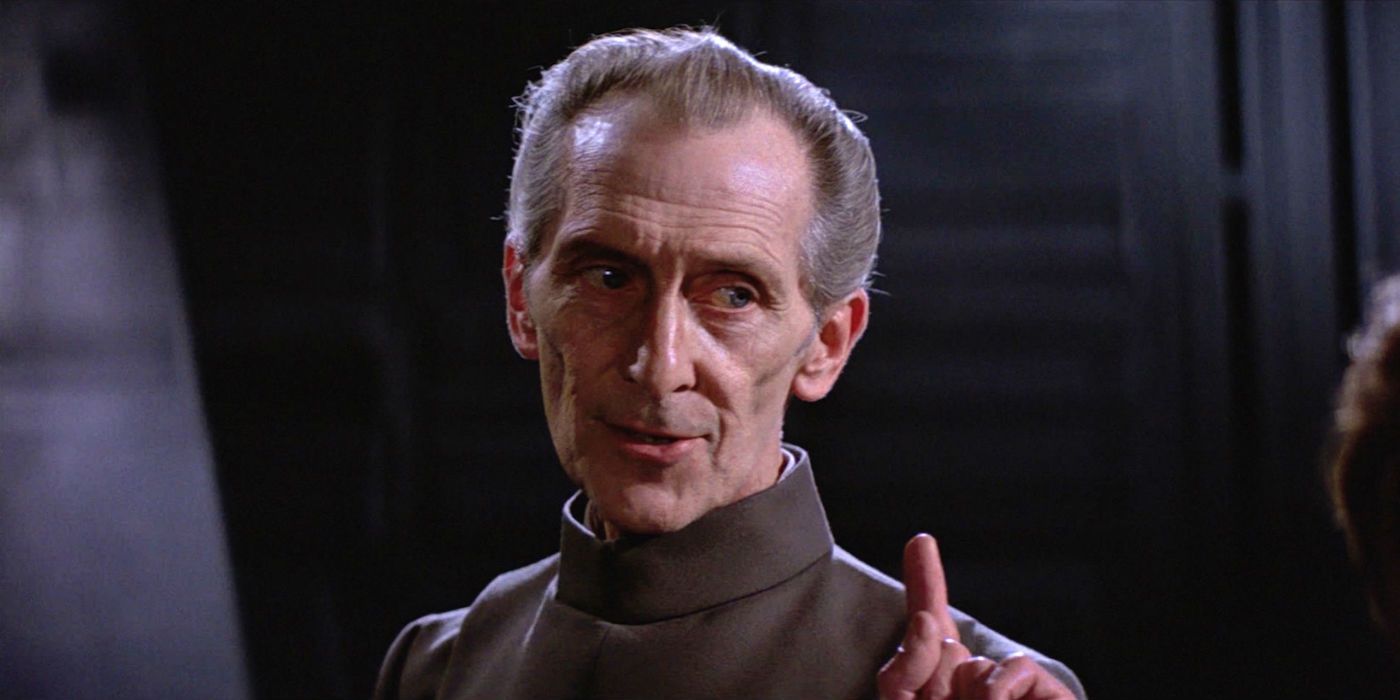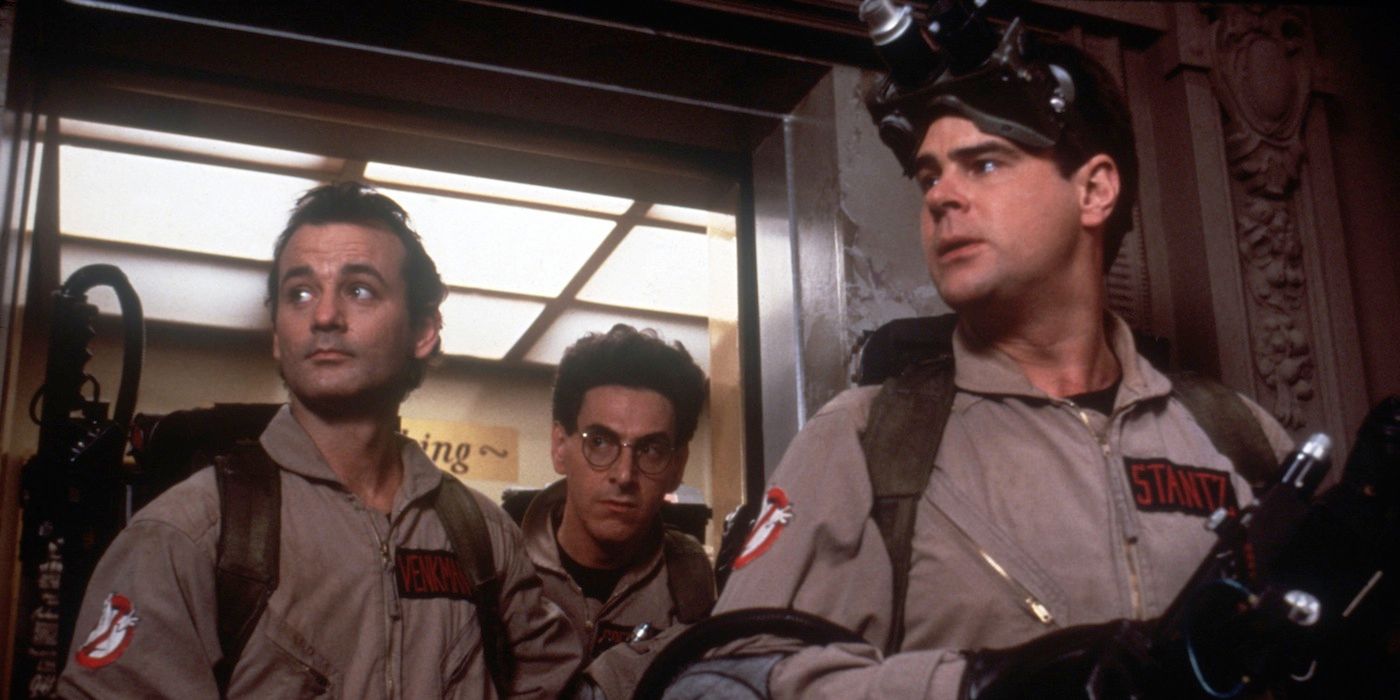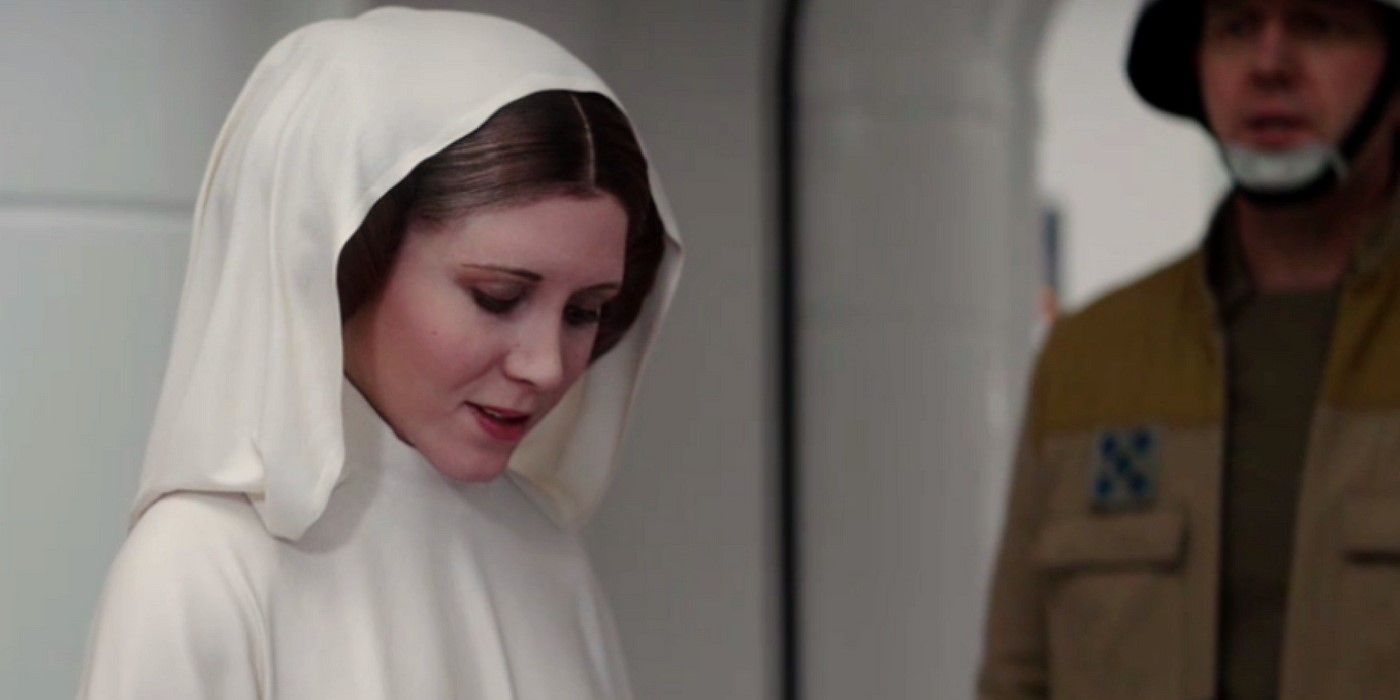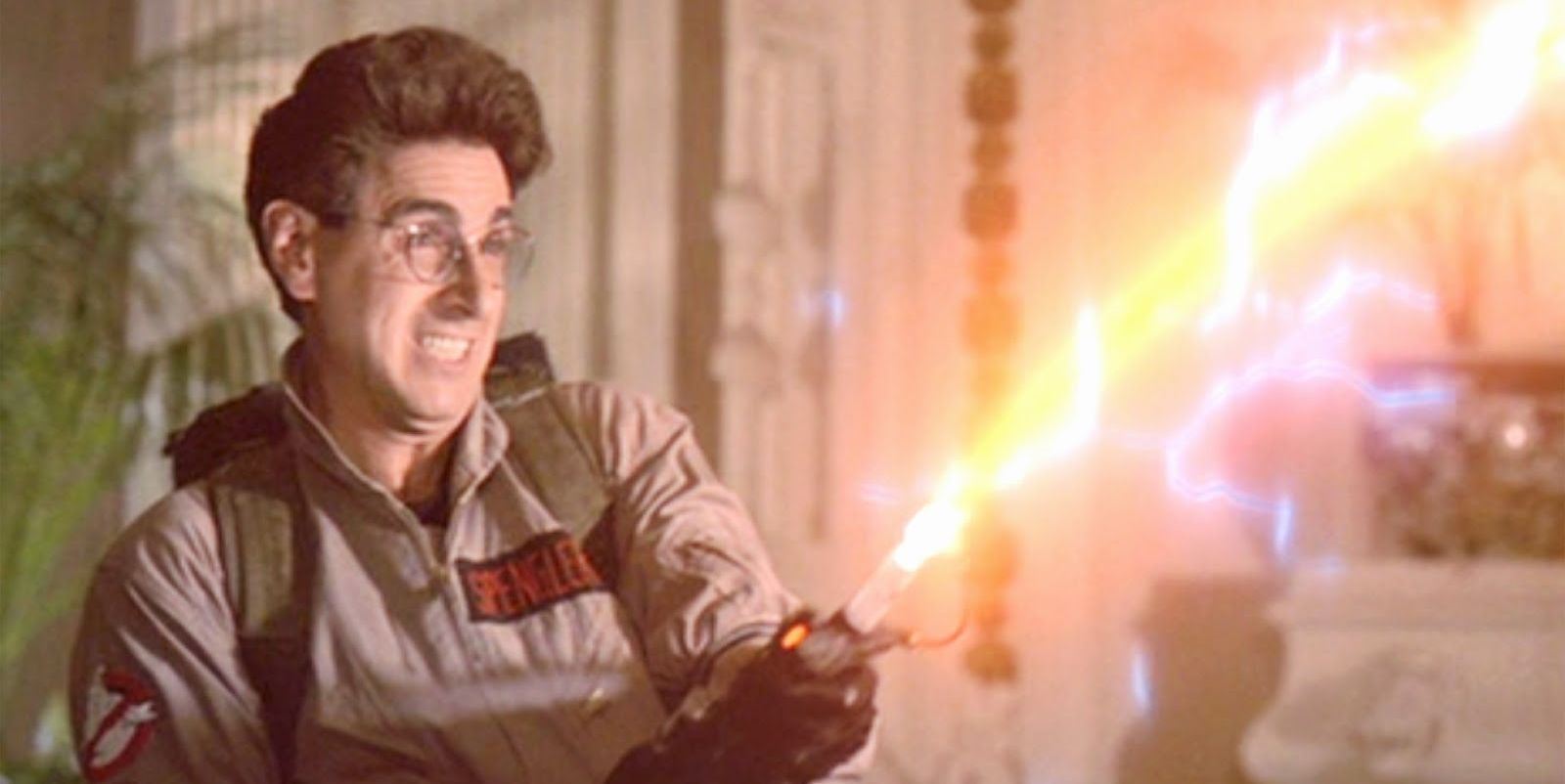Ghostbusters fans got a genuine surprise at San Diego Comic-Con last week, when producer and director Ivan Reitman announced that a new film is in the works for the franchise’s 35th anniversary. The 2016 reboot's poor box office showing put the brakes on Sony's shared universe, but there's still plenty of life left in the spectral franchise.
During a Q&A , fans asked Reitman what to expect from the next outing. While he was vague about a larger role for the classic team, he didn't exclude the possibility. After the loss of Harold Ramis, who played super-scientist Egon Spengler, any reunion would surely be bittersweet - but Reitman says even Egon isn't out of the picture entirely. Just as Lucasfilm resurrected Grand Moff Tarkin for Rogue One: A Star Wars Story, a CGI Spengler isn't off the table. But is it a good idea to bring Harold Ramis back? More importantly, would doing so be a tribute to his legacy, or would it be disrespectful?
The first Star Wars anthology film featured several scenes with Death Star commander, Grand Moff Tarkin (played by Peter Cushing, who died in 1994). Cushing's estate granted Disney permission to use his likeness, and Industrial Light and Magic used computer generated imagery (CGI), as well as motion capture technology (of actor Guy Henry) to bring the Imperial dignitary to life... sort of. ILM created a very convincing likeness of the British actor, and while many applauded their efforts, others criticized the studio for ghosting Cushing.
Of course, recreating an actor for several vital scenes in a big budget science fiction movie is one thing. The Ghostbusters live in world almost indistinguishable from our own (aside from the rotoscoped ghosts, anyway), and Egon wasn't a supporting cast member but a lead player. He contributed to the comedic dynamic, playing the straight man to Bill Murray’s snide Peter Venkman and Dan Aykroyd's cornball Ray Stantz, and that kind of comedic back-and-forth (not to mention all the running around that the Ghostbusters tend to do) would be much more difficult to recreate than a character standing mostly still while delivering his lines.
After last year's Ghostbusters reboot fell flat, however, the studio may choose to start from scratch with their latest specter-fighting brigade. Even if Reitman gives Ray, Winston, and Peter some serious screen time - which has a certain Tough Guys meets Ghostbusters appeal - the dynamic is wrong sans Egon. For the sake of argument, though, let’s assume Sony puts the spotlight on the original team. In that case, the filmmakers either need to explain Egon’s absence, or give him a post-mortem role. The best option would probably be to write him out of the next film, but if Sony does implement a CG-Egon, his presence in the movie should be minimal.
Going back to Star Wars, Cushing’s doppelganger received a substantial amount of screen time. However, his relationship with Director Orson Krennic and his connection to A New Hope (which chronologically follows Rogue One) is paramount to the plot. Spengler, on the other hand, isn’t "necessary" to future entries in the Ghostbusters franchse - even if he’s one of the keys to their team's camaraderie.
Of course, Ivan Reitman stepped away from the director's chair on Ghostbusters 3 after Ramis passed away. So, his interest in resurrecting the character may arise from a pragmatic point: Sony may want to use the original cast in its entirety. Or, he may simply just want to give his real-life friend a proper cinematic send-off. Either way, he has a few somewhat respectful options.
Egon could appear in a brief cameo or cut scenes, just enough to give his character a brief nod. Also, the ‘busters could consult with him while he’s doing research in a faraway land like Timbuktu or Utah. If Dr. Spengler is resurrected through a mo-cap actor, he could show up for just long enough to make a smart quip about getting too old for paranormal investigation and elimination. Or, if Reitman desires a truly franchise-worthy moment, Egon could appear as a ghost — a friendly one, naturally. The studio could even write in a quest for the original team, one where they have to rescue their deceased friend from the big bad before releasing him into the spirit world.
However, the wholesale revival of Harold Ramis for an entire movie or even a significant number of scenes seems like one step too far. Much like Cushing, the longtime humorist possessed his own style, comic timing, and mannerisms. The best digital artists might be able to replicate his outward appearance, Sony could cast voice talent that sounds like him, but it wouldn’t be Ramis. Despite the incredible advancements in digital imagery, CG people still look a little, well... computer-generated.
Next Page: [valnet-url-page page=2 paginated=0 text='The%20Ethics%20of%20Resurrection']
There’s also a disturbing aspect to regenerating the dead via computer. Not only does it feel potentially disrespectful to the man and the character, it also seems somewhat disingenuous. Just as recasting his role would be a slap in the face, restoring the late actor feels ethically uncomfortable - like walking over his grave. Even if his family and friends were comfortable with the process (which they seem on the fence about), how far should a studio go to recreate a character?
Companies have used deceased actors in the past, including the infamous Dirt Devil ad that showed Fred Astaire dancing with a vacuum, or Chris Farley’s Tommy Boy re-purposing for DirecTV. But shilling products with a deceased actor represents an obvious yuck-factor, since using an actor for commercial purposes after their death presumes things about their character and their intent. Recreating them, especially when there's a viable creative reason to do so, is somewhat more ambiguous. Disney’s use of Cushing may disturb some people, but the move did allow the producers to sidestep a major plot hurdle. In Ramis' case, circumventing his character doesn't pose a serious problem for a new movie.
Sure, Egon is a fictional character pieced together by Ramis, Aykroyd, and Rick Moranis, but the issue isn't whether Sony owns Dr. Spengler as an intellectual property. Rather, is reconstructing Ramis' likeness an acceptable alternative to retiring his character or recasting him? For instance, the Vacation movies often swap out major characters like Rusty or Audrey, but they aren't defined by their physical appearance, so casting actors who look radically different is both acceptable and amusing. In Ghostbusters' case, Harold Ramis is Egon Spengler. Digitally reconstructing Ramis is already a moral grey area that risks reducing his chemistry with Murray, Aykroyd, and Ernie Hudson to a series of algorithms.
Of course, Ramis was a comedy innovator. He might be down with a digital rebirth - as long as it's funny. During the panel discussion, Reitman also hinted that Sony could go the Carrie Fisher route and de-age the rest of the Ghostbusters. While this path might hit all the nostalgia buttons, it would not only be prohibitively expensive, but also dilute the actors' performances by filtering them through wrinkle-free CGI masks. In this case, the studio is probably better off whipping up an animated film for the original actors, filming them as is, or saying "the heck with it" and rebooting yet again.
All things aside, a Ghostbusters 35th anniversary feature offers a lot of exiting possibilities. Assuming the movie goes forward, it’s live-action, and it features the original cast, then it’s time to talk Egon. Unlike the galaxy far, far away, though, New York City already has plenty of ghosts to bust. Retiring Spengler or creating a new, unrelated character — and then screen-testing him or her against the other Ghostbusters — makes more sense than digitizing the late, great Harold Ramis. After all, the funniest moments from the saga came from battling the undead, not recreating them.
And if Sony does bring Egon back, hopefully they’ll give him better material to work with than Ghostbusters 2 did.

